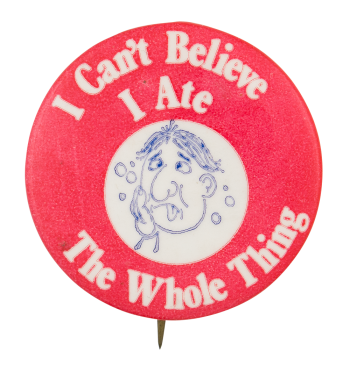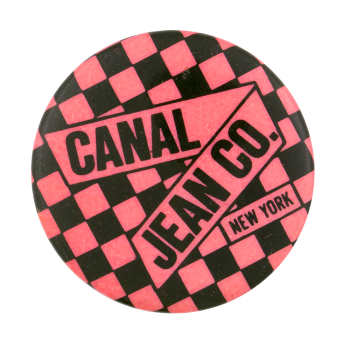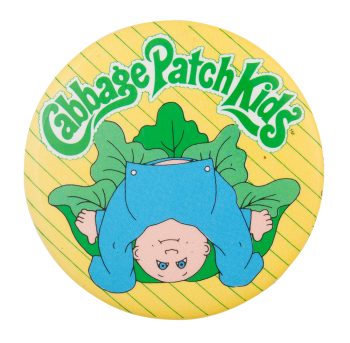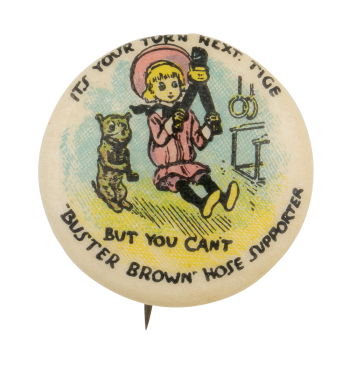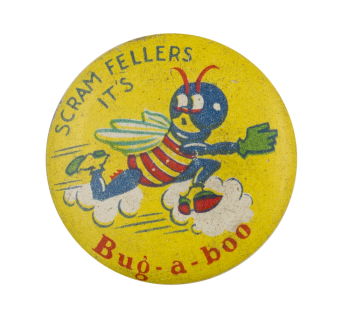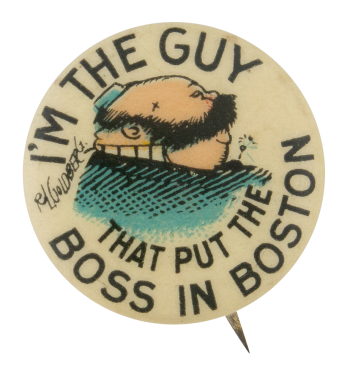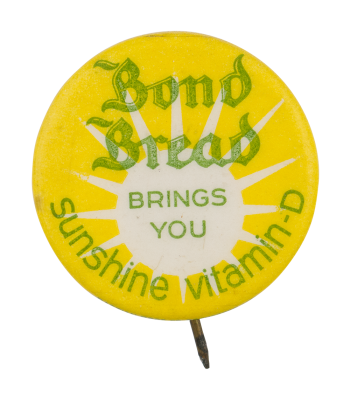Alka-Seltzer I Can't Believe I Ate The Whole Thing
| Category | |
|---|---|
| Additional Images | |
| Sub Categories | |
| Text on Button | I Can't Believe I Ate The Whole Thing |
| Image Description | Red background with white text. White circle in the center with a blue drawing of a distressed-looking man sticking his tongue out and holding his face, with bubbles in the air around him. |
| Curl Text | NG SLATER CORP., N.Y.C. 10011, [union bug] |
| Back Style | |
| The Shape | |
| The Size | |
| The Manufacturer | |
| Additional Information | In 1972, an Alka-Seltzer commercial aired in which "Ralph" moans "I can't believe I ate the whole thing" while his wife teases him and then advises him to take some Alka-Seltzer. The 30 second commercial was an immediate hit and received CLIO Hall of Fame recognition. It was remade in 2005 with Frank and Marie Barone (Peter Boyle and Doris Roberts), the lovable couple from "Everyone Loves Raymond." Both ads manage to promote the product in a memorable way, while being highly entertaining. Alka-Seltzer is an effervescent antacid and pain reliever which was first sold in 1931. |
| Sources |
CNN Money. (2005, December 12). Alka-Seltzer will remake classic commercial: Report. Retrieved July 28, 2020, from https://money.cnn.com/2005/12/12/news/funny/alkaseltzer/ Cohen, H., & Pasqualina, B. (Directors). (1972). I Can't Believe I Ate The Whole Thing [Video file]. Retrieved June 28, 2020, from www.youtube.com/watch?v=VFKifpMtlNs This Is Grow. (n.d.). Alka-Seltzer: Project Re: Brief – Alka-Seltzer. Retrieved July 28, 2020, from https://thisisgrow.com/work/project-re-brief-alka-seltzer |
| Catalog ID | AD0036 |

